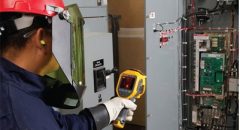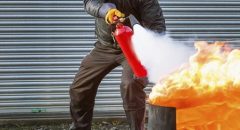Escape, Evacuation, and Rescue Analysis (EERA)
EERA ensures people can escape, evacuate, and be rescued safely in emergencies at high-risk workplaces.
Introduction to EERA
Overview
Escape, Evacuation, and Rescue Analysis (EERA) is a critical process in ensuring safety in high-risk industries such as oil & gas, chemical plants, and offshore facilities. It involves assessing whether personnel can safely escape from danger, evacuate efficiently, and be rescued effectively during emergency situations. EERA evaluates escape routes, safe refuge areas, evacuation procedures, and rescue arrangements to minimize risks and protect lives. By systematically identifying potential bottlenecks, environmental hazards, and human factors, EERA helps organizations maintain high safety standards and comply with regulatory requirements.
Definition and Scope of EERA
EERA stands for Escape, Evacuation, and Rescue Analysis. It’s the study of how people can safely get out of dangerous situations, reach safe areas, and be rescued if needed. It applies to workplaces like chemical plants, oil rigs, factories, and large buildings.
Why EERA is Critical in High-Hazard Industries
High-risk industries can have fires, explosions, toxic leaks, or floods. EERA ensures that everyone can escape, evacuate, and receive help quickly, preventing injuries and fatalities.
Key Terminology: Escape, Evacuation, Rescue, Major Accident Event
- Escape: Immediate movement from danger.
- Evacuation: Organized removal from a hazardous area.
- Rescue: Assistance to people who are trapped or injured.
- Major Accident Event: A severe incident that can affect multiple people or large areas.
Regulatory & Industry Context
Relevant Standards and Guidelines
EERA follows international safety standards like ISO 17776 (offshore risk management) and ISO 15544 (safety for lifeboats and evacuation systems).
Typical Regulatory Requirements for EERA Studies
Regulations often require organizations to demonstrate that escape, evacuation, and rescue are practically possible and risks are reduced as much as reasonably possible (ALARP).
Industries and Asset Types Where EERA is Applied
EERA is widely used in offshore platforms, onshore plants, chemical facilities, tunnels, and large commercial buildings.
EERA Objectives and Goals
Establishing EER Performance Goals
EERA sets clear targets for how fast people can escape, reach safe zones, and be rescued.
Demonstrating ALARP via EERA
EERA shows that safety risks have been reduced as much as reasonably practicable, helping companies meet legal and safety standards.
Linking EERA with Emergency Preparedness and Response Planning
EERA findings support emergency drills, evacuation plans, and rescue protocols, ensuring everyone knows what to do in a crisis.
EERA Methodology and Workflow
Inputs: Hazard Studies, FERA/QRA, Asset Data
EERA begins by gathering data on potential hazards, prior risk assessments, and details of the workplace layout.
Step-by-Step Process of EERA Assessment
The process involves:
- Identifying hazards.
- Mapping escape routes.
- Analyzing muster points.
- Evaluating evacuation equipment.
- Assessing rescue readiness.
Outputs: Time-to-Escape, Evacuation Time, Rescue Availability
EERA provides critical metrics such as how long it takes to escape, evacuate, or be rescued during an emergency.
Key Components & Considerations in EERA
Escape Routes and Accessibility Under Emergency Conditions
Routes must be clear, wide, and safe from hazards like fire or smoke.
Muster Points and Temporary Refuge Considerations
Safe areas or shelters must accommodate all personnel and protect them until help arrives.
Evacuation Means and Disembarkation/Transport to Place of Safety
Evacuation tools like lifeboats, ramps, stairs, and transport vehicles should work reliably.
Rescue Arrangements and Post-Evacuation Treatment & Transfer
Rescue plans ensure injured or trapped personnel receive quick help and medical care.
Impairment & Bottleneck Analysis
EERA checks for blocked routes, malfunctioning equipment, or crowded areas that could slow evacuation.
Time-Based Performance Criteria
Estimating Escape and Evacuation Times
EERA calculates how long it takes for people to move from danger to safety.
Endurance Time of Refuge/Muster/Evacuation Facilities
Safe zones must remain protective for the time needed until evacuation or rescue.
Survivability and Rescue Timeframes
Analysis ensures people survive until rescue teams can reach them, even under worst-case conditions.
Common Challenges and Risk Factors
Human and Organisational Factors Impacting EERA
Human behavior, panic, and lack of training can delay evacuation or escape.
Environmental and External Hazard Impacts
Fires, explosions, or toxic releases can block routes or make evacuation harder.
Asset-Specific Issues
Different workplaces have unique challenges, like offshore platforms, tunnels, or high-rise buildings.
Using EERA Findings for Improvement
Identifying Design or Procedural Gaps
EERA reveals weaknesses in escape routes, muster points, or rescue plans.
Integrating EERA into Verification, MOC, and Safety-Case Updates
Findings can be used to update safety procedures and verify improvements.
Continuous Review and Re-Assessment of EERA Over Lifecycle
EERA is re-evaluated regularly to account for facility changes or new hazards.
Conclusion & Future Trends
The Evolving Scope of EERA in Modern Safety Engineering
EERA is expanding beyond industrial facilities to urban buildings, tunnels, and complex infrastructure projects.
Digital Tools, Simulation, and Modelling Advances in EERA
New software helps simulate emergencies and predict human behavior to optimize safety planning.
Summary of Key Takeaways for Practitioners
- Ensure escape routes are clear and safe.
- Muster points and shelters must be reliable.
- Evacuation tools and rescue teams should be fully ready.
- Continuously assess and improve safety measures.
Ready to make your workplace safer with expert guidance?
Contact Aura Safety & Risk Consultant – HSE Management & Consulting in India]
Get free a quote
Submit your Details
+91 99994 02106
What we offer
Our Services
Identify, evaluate, and control process hazards with expert risk assessments, ensuring safe, reliable, and compliant industrial operations.

Identify, evaluate, and control process hazards with expert risk assessments, ensuring safe, reliable, and compliant industrial operations.

Implement site safety plans, audits, and training to prevent accidents, ensuring safer construction environments and regulatory compliance.

Design, engineer, and audit fire protection systems ensuring reliable performance, asset safety, and adherence to national safety standards.

Empowering workforce with certified HSE, fire, and industrial safety training programs for skill development and regulatory competence.

Create immersive, interactive VR safety training modules for realistic learning experiences in hazard recognition and emergency preparedness.
How it works
Industry Consultation
Project Scoping & Industry Brief
Service Selection
Site Visit & Inspection
Audit & Analysis
Report Submission & Discussion
Frequently Ask Question
Escape is immediate movement from danger, evacuation is organized removal, and rescue helps trapped or injured people.
It ensures people can reach safety and be rescued quickly, minimizing injury and loss of life.
Offshore oil rigs, chemical plants, factories, tunnels, high-rise buildings, and other high-hazard workplaces.
Time-to-escape, evacuation time, rescue readiness, and identification of bottlenecks.
Regularly, especially when layouts change, new hazards are introduced, or after incidents.
Yes, software can simulate emergency scenarios and human behavior for better planning.
It demonstrates that risks are reduced as much as reasonably practicable and supports safety case updates.
